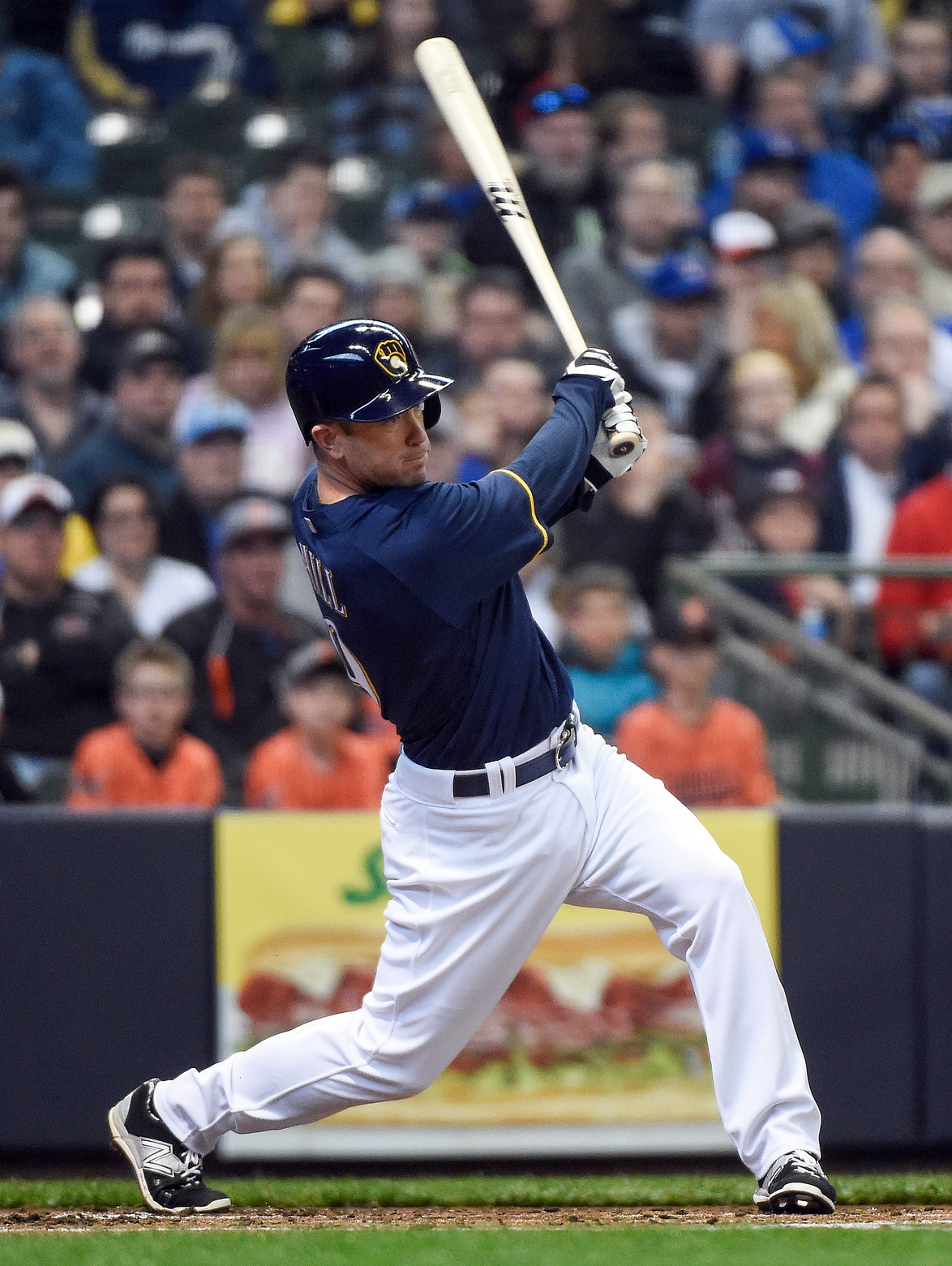I will be the first to admit that I figured Aaron Hill was a salary throw-in when he arrived from Arizona in the offseason Jean Segura trade. Segura was a league-average shortstop, and that type of player has legitimate value, but the return of Isan Diaz and Chase Anderson seemed sufficient. Arizona, who had previously dumped salary in 2015 with the Touki Touissant trade, looked to be offloading another expensive veteran so they would have enough cash on hand to pay new acquisition Zack Greinke.
From that perspective, even, trading for Hill made sense. The Brewers opened this season with a payroll of about $65 million, and they are currently carrying the league’s smallest payroll. So taking on some additional veteran salary (about $6 million, as Arizona is paying part of Hill’s salary) to get a slightly better return makes a good deal of sense.
As mentioned above, Diaz and Anderson alone was a pretty good return for a league-average shortstop who had seemingly plateaued and was about to hit arbitration. Diaz was a low-minors shortstop who Chris Crawford praised in the Transaction Analysis about the deal, and Anderson was a solid option for the back of a big-league rotation. Hill seemed like an afterthought. The best case scenario was that he hit decently for a couple months and upped his trade value.
But Hill has actually been even better than that this year. He’s put up a .283 TAv (better than the league average at third base) while playing nearly every day, which would make him a solid contributor even on a playoff team. The Brewers are not that team, but they are certainly in a position to deal him to a contender and command a hefty return.
The trade deadline is usually a chance for rebuilding teams to trade their surprisingly good relievers to playoff teams looking to augment their bullpen; actual starting-caliber position players don’t come up every year, and they fetch a good return. The Brewers were able to turn a good half-season from Gerardo Parra into Zach Davies, a cost-controlled young starter. Hill has a longer track record of success than Parra did, so the Brewers can at least be optimistic about what they will get back.
Predicting the trade market is a relatively foolish exercise. Without being in the room or on phone calls, outsiders like me have no way of knowing what specific players are on the table or being discussed. However, we can—and probably should—have some idea of where players might be traded and what the general range of returns is.
Hill himself is a valuable commodity, as he can play (mostly competently) both second and third base, which makes him interesting for contending teams that need any sort of infield help. He is also a free agent after this season, which means that he is necessarily a short-term option so any team acquiring him doesn’t have to worry about how he fits into their long-term plans.
There are a few obvious potential landing spots right off the bat: Boston, Kansas City, and the Mets. Boston is currently giving Travis Shaw the lion’s share of playing time at third base, and he has been good this year but came out of relative obscurity and is unproven. Kansas City lost Mike Moustakas for the year to a torn ACL, and the Mets have probably lost David Wright for the season as well. Each of those three teams would make sense as options for Hill, as they would be simply filling a spot for two months of a season.
The Royals wouldn’t have to worry about potential overlap with Moustakas because they can decide not to re-sign him, and the Mets would be in the same situation. The Red Sox may decide they want some veteran insurance behind Shaw.
In any scenario, Hill’s market is relatively set. Parra last year is likely a decent comparison; the Brewers got a low-ceiling, high-floor prospect who was close to the big leagues. That is a common profile, and I expect the Brewers will be shooting for it again. As they attempt to rebuild their organizational depth, acquiring high-probability players instead of high-ceiling, low-floor types will help them flesh out each level of the system. It is this approach that has fueled their rebuild, and I expect that David Stearns will follow the same strategy here.
Hill was a low-risk acquisition; he was partially a salary dump, and so while the club was clearly hoping to be able to flip him, they were playing with house money in a certain sense. The fact that he has played so well and they will likely get a prospect of value in return just makes the Segura trade that much sweeter, and this will also continue the trend of the Brewers making low-risk moves that have rich rewards.

1 comment on “Aaron Hill’s Trade Prospects”